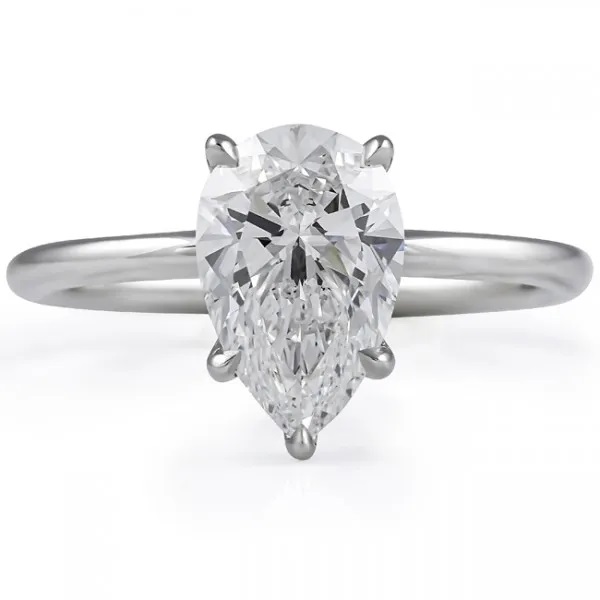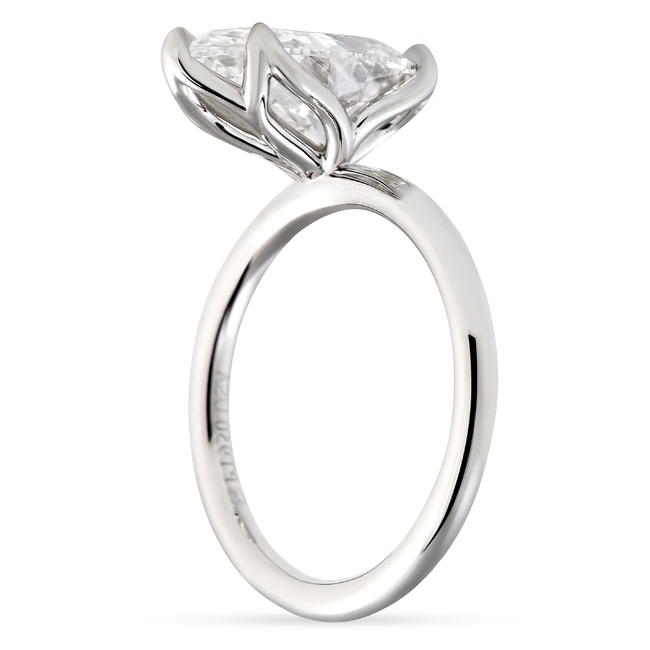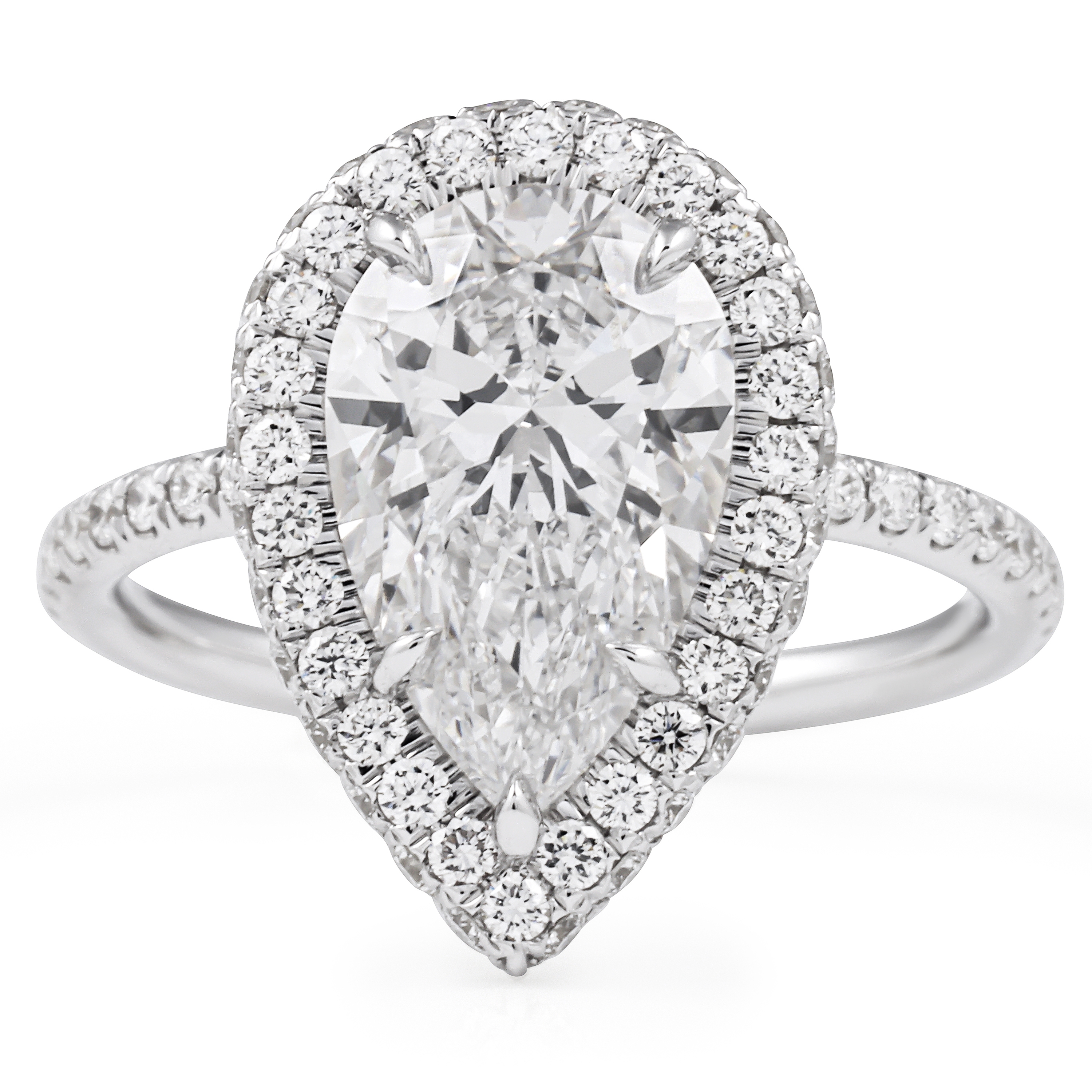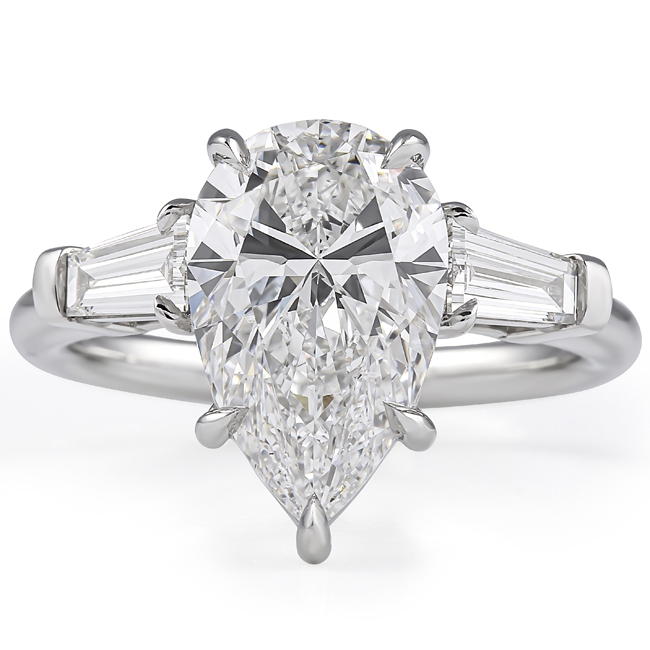Pear Shape Lab Diamond Engagement Rings
No two pear shape diamonds are cut the same so if you're looking for something unique, a pear shape diamond is the center stone for you! This center-stone shape provides optimal finger coverage and will appear larger than most any other shapes. They have a distinct appearance with their teardrop outline and pointed tip.

View Some our Favorite Pear Shape Lab Diamond Engagement Rings
Shop all Pear Shape Lab Diamond Engagement RingsVisit our New York City Showroom or Shop with Us Remotely
Meet with us in-store at our New York City showroom or shop with us remotely to see more Pear Shape Lab Diamond Engagement Rings.
Frequently Asked Questions
Why is a lab-grown pear-shaped diamond a good option?
If you are looking for something unique, look no further than a pear shape lab diamond. No two pear shapes are cut the same making every single stone one-of-a-kind. These lab diamonds provide optimal finger coverage and will appear larger than most any other shapes. They are also great at hiding imperfections so you can compromise on clarity to allow for a better color or higher carat weight.
Which of the 4 Cs is most important for pear shaped diamonds?
With pear shaped diamonds, the most important of the 4 C’s to consider is Color; Like oval and marquise, pear diamonds can show color easily. We recommend ‘I’ color and above to give you the whitest face up look.
Is there an ideal length-to-width ratio for a pear shaped diamond?
Pear diamonds will have ratios between 1.4 and 1.7, generally. The 1.4 ratio offers a shorter, rounded appearance while a 1.7 ratio offers a longer and thinner appearance. There are of course ratios in between so seeing what looks appealing to you is important.
How is a lab-grown diamond created?
There are two methods to create lab diamonds: High Pressure High Temperature (HPHT) and Chemical Vapor Deposition (CVD).HPHT was the first major method for creating lab-grown diamonds. It mimics the natural process of diamond formation in the span of a several weeks as opposed to several billion years. A diamond seed is placed into a special press with carbon. The area is until it reaches a temperature of around 1600 degrees Celsius, or about 2900 Fahrenheit. The chamber exerts pressure up to and over 870,000 pounds per square inch. Molten metal (typically from a source like graphite) in the chamber then dissolves the carbon source, and a diamond begins to form and build around the diamond seed.In CVD, a diamond seed is placed into a sealed vacuum chamber. After the chamber fills with carbon-heavy gas, like methane, it’s heated to a high temperature of around 1500 degrees Fahrenheit. The high temperatures convert the gas into plasma, which releases pieces of carbon. Those carbon pieces build upon the diamond seed originally placed in the chamber. Eventually, a full diamond forms after layer and layer of carbon pieces attach to the seed. The whole process produces incredible, chemically-pure diamonds free of most impurities. They don’t contain metal inclusions, either.You can read more about HPHT and CVD in our blog, An In-Depth Look at CVD vs. HPHT.
What’s the difference between lab-grown diamond engagement rings vs natural diamonds?
Natural diamonds form over millions of years under pressure from the Earth’s crust, and are mined, cut, and polished to produce the brilliant stones you find in jewelry. Lab-grown diamonds undergo the same process, only instead of millions of years, they form in a few weeks via a high temperature or a chemical vapor process. The difference between a natural and lab-grown diamond is indistinguishable to the naked eye. They have the same chemical and physical attributes, but specially trained gemologists may be able to use a magnifying tool to indicate growth patterns or the presence of elements that would help distinguish one from the other. However, the most trusted method is to use a testing machine. Both types can have inclusions, or tiny flaws, but have identical hardness.
Are lab-grown diamonds as durable as natural ones?
Natural and lab created diamonds have the exact same chemical composition. Because of this, lab diamonds are also just as durable as natural diamonds meaning they are the hardest, most durable gemstone on the Mohs scale.
Which way should you wear a pear shape diamond ring?
There's no wrong way to wear your pear shape diamond ring. However, positioning the diamond to follow the finger's length can make the digit appear slender and longer. Whether to have the sharp edge point down (facing the fingertip) or point up (facing the arm) is debated. A pointed-down pear shape diamond complements the hand's shape and looks spectacular at an angle when modeling the ring. Choosing a pointed-up pear shape diamond shows off the unconventional form.
Are lab-grown diamonds GIA-certified?
Not all lab-grown diamonds are GIA certified. However, all lab-grown diamonds at Lauren B are GIA certified! Browse our inventory of GIA Graded lab diamonds.
What side-stone shapes suit a pear-shaped lab-created diamond engagement ring?
Popular side stone options for pear shaped lab diamond engagement rings include tapered baguettes and smaller pear shaped diamond stones.
Do lotus prongs suit a pear-shaped lab-created diamond?
Any of our engagement rings can be designed to include lotus prongs, pear-shaped lab-created diamonds.
What are the benefits of a halo on a lab-grown pear-shaped diamond?
A halo setting has pave diamonds encircling a center stone, which means it takes up more space on the finger. A halo setting with pave diamonds that match the center stone’s color, clarity, and cut can make a pear shape diamond appear larger. The contrasting color and brilliance of the pave diamonds compared to the center stone can make the pear stand out. The halo also serves an essential function by protecting the center stone from damage. A pear shape diamond in a halo setting is ideal for individuals who desire an attention-grabbing, ultra-sparkly engagement ring.
















